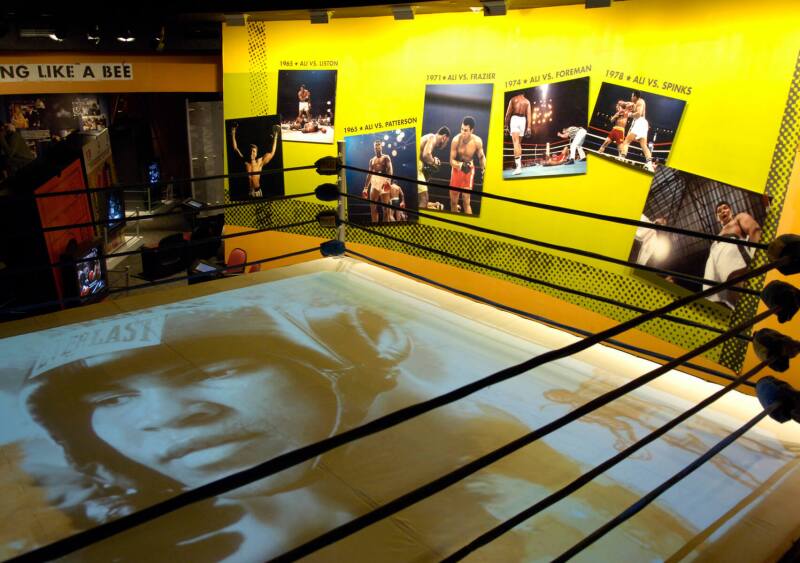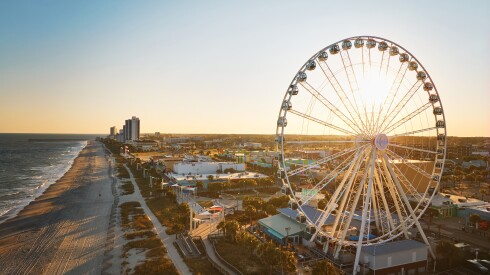As the country recognizes Juneteenth, a commemoration of the end of slavery, Kentucky has launched the Kentucky African American Heritage Trail, with more than 50 stops across the state that honor the sometimes lesser-known histories of influential Black people who helped forge its legacy.
Locations include museums, historical landmarks, and neighborhoods; all can be experienced by walking or driving tours. Four stops intersect with the U.S. Civil Rights Trail, and two are listed on the Lewis and Clark National Historic Trail.
The Kentucky Department of Tourism spearheaded the initiative in partnership with the Kentucky Historical Society and the Kentucky Heritage Council. The project took more than two years to develop.
“The Kentucky African American Heritage Trail is more than a collection of historic sites—it’s a journey through the heart of our shared history,” Mike Mangeot, commissioner of the Kentucky Department of Tourism, said via email. “This initiative honors the resilience, contributions, and cultural influence of African American people and communities while creating new opportunities for education, tourism, and economic growth.”

Another stop on the trail is the Muhammad Ali Center in Louisville, which pays homage to the heavyweight champion turned humanitarian.
Courtesy of Visit Kentucky
Highlights along the way, from Louisville to Paducah
The trail is organized by region. A good starting point is Louisville, a hub of Black culture and commerce, where stops include the Muhammad Ali Center, which pays homage to the city’s late boxing legend, and the Roots 101 African American Museum, where visitors can dig into history that starts on the shores of West Africa and moves through the Middle Passage and Jim Crow era to the present. Meanwhile, the Kentucky Derby Museum has a newly expanded Black Heritage in Racing exhibit spotlighting exceptional Black equestrians, including Oliver Lewis, the first jockey to win the Kentucky Derby in 1875.
Farther south, Hodgenville is home to the first national monument dedicated to the 16th U.S. president, who famously opposed slavery: Abraham Lincoln Birthplace National Historical Park, which includes a replica of Lincoln’s humble childhood log cabin home. In Bowling Green, visitors can take a self-guided walking tour of the Shake Rag Historic District. This neighborhood, listed on the National Register of Historic Places, was a thriving Black community from the early 19th century through the era of segregation.

Camp Nelson National Cemetery honors the formerly enslaved Black soldiers who served in the Union Army.
Courtesy of Visit Kentucky
Places of interest along the way include State Street Baptist Church, built in 1898 and the oldest African American church in Bowling Green, and Alice’s Beauty Shop, which served as a cosmetology school from the 1940s through 1995. Today, it’s under different ownership but still operates under its original name.
Southwest of Bowling Green, Russellville is home to the SEEK Museum (Struggles for Emancipation and Equality in Kentucky). This former plantation-turned-museum shares the Black experience in Kentucky across seven buildings. The story in the main house centers on the more than 150 enslaved people who once lived and worked on the property and the man who enslaved them, Major Richard Bibb, who had a change of heart about the institution of slavery. Upon Bibb’s death in 1839, his will freed the enslaved people he owned and provided many with land and money. The museum also commemorates Alice Allison Dunnigan, a Russellville native and the first Black woman to work in the White House press corps.
Other highlights on the trail include the Whitney Young Birthplace and Museum in Simpsonville, which is also part of the U.S. Civil Rights Trail and honors the civil rights leader and former National Urban League director, and Camp Nelson National Monument in Jessamine County, where thousands of formerly enslaved Black men enlisted and trained in the Union Army between 1863 and 1866. The site later became a haven for other formerly enslaved people seeking refuge.
Finally, the Hotel Metropolitan in Paducah, a historic inn designated in the Negro Motorist Green Book provided housing for Black entertainers during segregation. Today, it serves as a museum that offers private tours led by executive director Betty Dobson, who portrays the hotel’s original owner, Miss Maggie Steed, and dresses in period clothing.








